Temperature in English: Definition, Usage and Examples
"Temperature in English” is more than just a number. This guide explains its meaning, correct pronunciation, and common uses in contexts like weather, body health, and expressions. You'll also find synonyms, related vocabulary, and tips to use it effectively in speaking and writing.
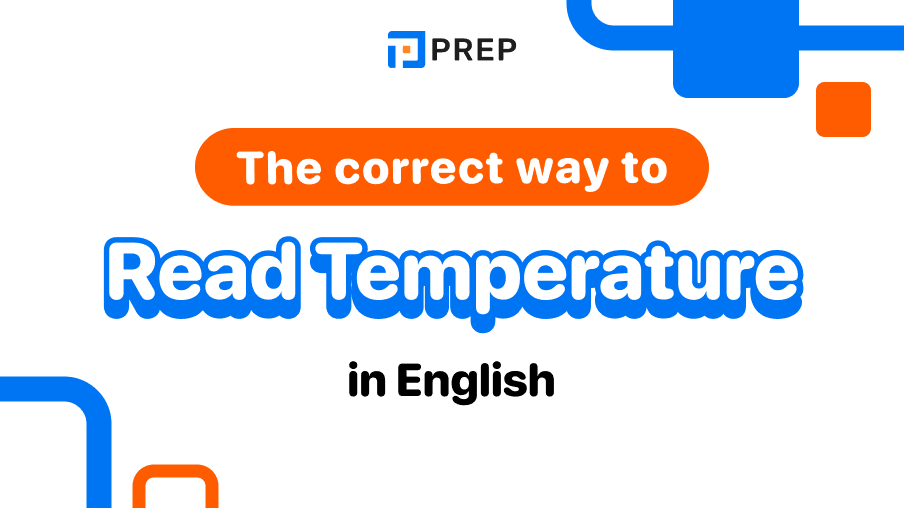
I. What does Temperature mean in English?
The word “temperature” in English refers to the degree of heat or cold measured in a person, place, or object. It is widely used in contexts such as weather, health, science, and even emotion or mood. Understanding how the word functions across different settings is essential for accurate communication.
- Temperature is a countable noun, typically used in the singular form, though it can be pluralized when comparing multiple values (e.g., temperatures across regions).
- In IPA (International Phonetic Alphabet), the word is pronounced as:
- /ˈtem.prə.tʃər/ in British English
- /ˈtem.pɚ.tʃɚ/ in American English
Grammatically, it is often the subject or object in a sentence and can be modified by adjectives like high, low, normal, or average.
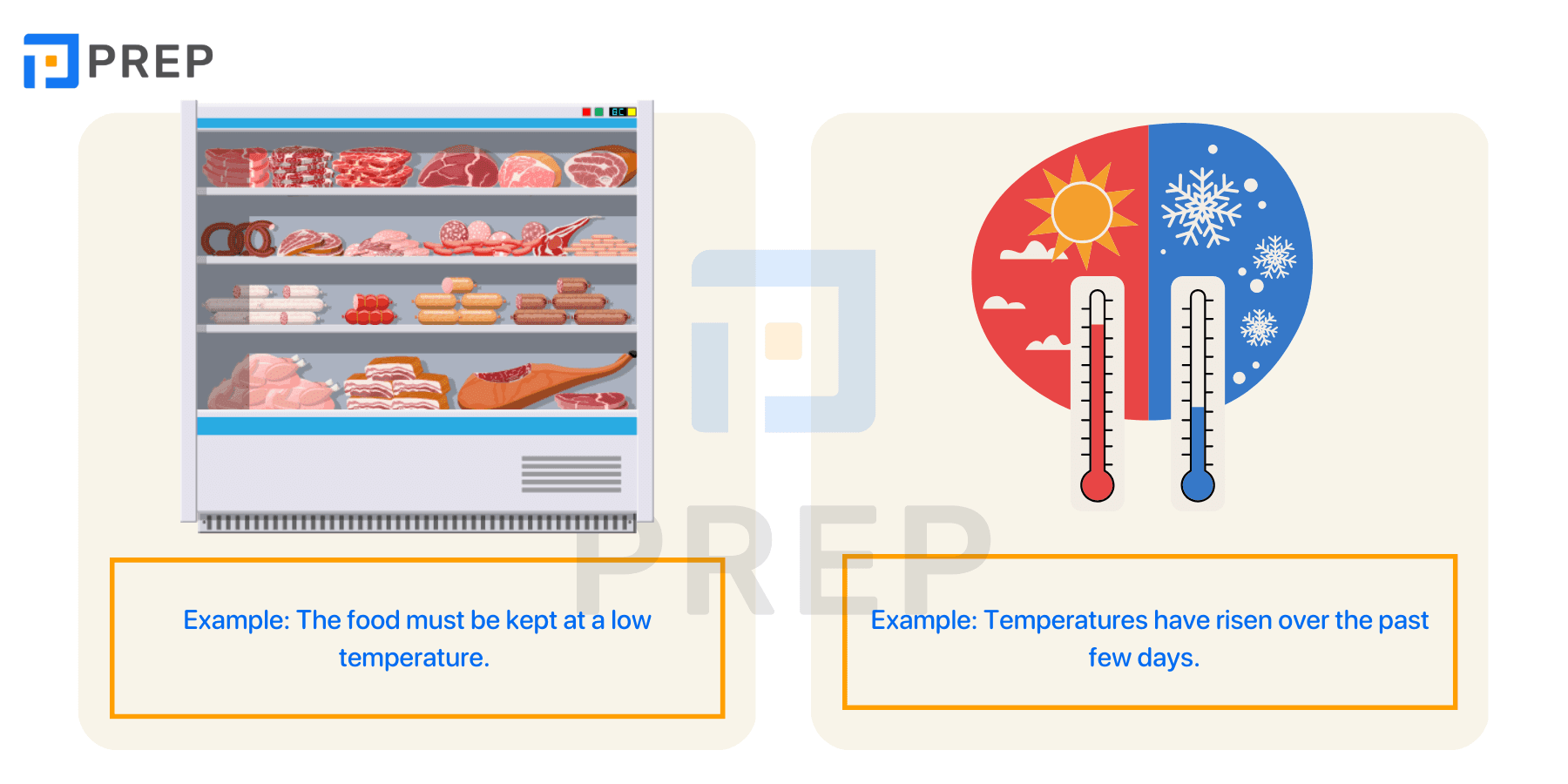
1. How to Use “Temperature” in English Sentences
To use the word “temperature” accurately in English sentences, learners should understand its typical sentence structures, tenses, and phrase combinations. Whether you're talking about the weather, health, or science, these patterns will help you express ideas more clearly and naturally.
“Temperature” is a countable noun and usually functions as the subject or object in a sentence. Common structures include:
|
Structure Pattern |
Example Sentence |
|
Subject + verb + temperature |
The temperature dropped suddenly last night. |
|
There + be + temperature + modifier |
There was a high temperature recorded in the afternoon. |
|
Have + temperature |
She has a slight temperature today. |
|
Verb + prepositional phrase |
Temperatures vary across different regions. |
Depending on the context, “temperature” can appear in different verb tenses:
-
Present Simple tense - Used for general facts or daily situations.
Example: Water boils at 100 degrees Celsius. -
Past Simple tense - Used to describe past events or measurements.
Example: Yesterday’s temperature was lower than normal. -
Present Perfect tense - Used to connect past measurements with current effects.
Example: The temperature has been rising due to climate change.
Tense usage often reflects not just time but also the purpose of the sentence—whether it’s describing a fact, observation, or trend.
Common Collocations with “Temperature”
Understanding collocations helps expand vocabulary and avoid unnatural phrases. Below are common combinations with example usages:
|
Collocation |
Context |
Example |
|
high/low/normal temperature |
Health / Weather |
He has a high temperature. |
|
measure/take/check temperature |
Health / Science |
The nurse took his temperature. |
|
temperature rises/drops/falls |
Weather / Climate |
The temperature dropped overnight. |
|
temperature range/reading |
Scientific Report |
The temperature readings were consistent. |
|
body/core/room temperature |
Specific Usage |
Store the vaccine at room temperature. |
By mastering these sentence forms and expressions, learners can confidently use “temperature” in conversations, reports, and exam responses with accuracy.
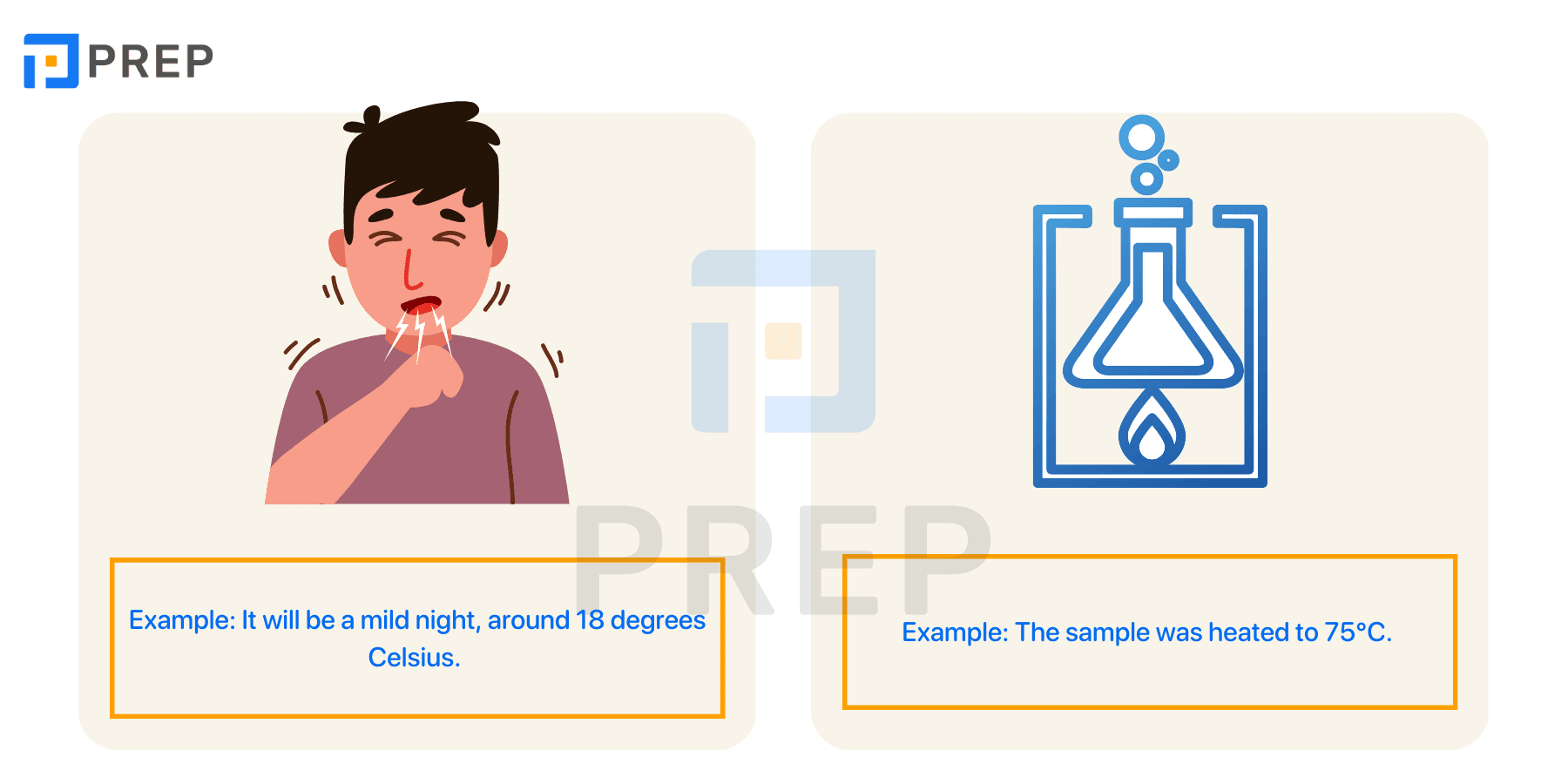
2. Pronunciation of “Temperature”
The word “temperature” can be challenging to pronounce due to its spelling and syllable reduction in fluent speech. Understanding both the British and American pronunciation variants helps learners sound more natural and confident.
British vs. American Pronunciation
|
Variant |
IPA |
Pronunciation Guide |
|
British English |
/ˈtem.prə.tʃə/ |
“TEM-pruh-chuh” – 3 syllables |
|
American English |
/ˈtem.pɚ.tʃɚ/ |
“TEM-per-chur” – sounds more compact |
- In British English, the middle syllable is often reduced to a soft “pruh” sound.
- In American English, the word tends to shift into a 2-syllable pattern due to "flapping" and r-colored vowels (ɚ).
- In fast or informal speech, it may sound like: “tem-cher” or “tem-per-chur”.
Tip: To sound natural, focus on reducing the middle syllable and linking sounds smoothly.
Saying Temperatures with Units (°C and °F)
When using “temperature” with specific numerical values or units (Celsius or Fahrenheit), the correct pronunciation of numbers and degree unit also matters.
Format and Speaking Scenarios:
|
Written |
Spoken Form |
Context |
|
35°C |
“thirty-five degrees Celsius” |
Scientific, formal English |
|
98.6°F |
“ninety-eight point six degrees Fahrenheit” |
Health, medical (US context) |
|
20°C |
“twenty degrees” (Celsius is optional if clear) |
Conversational use |
- Only “degrees” is required in informal conversation; add “Celsius” or “Fahrenheit” when needed.
- Avoid saying “temperature is 20 degree” → must be “degrees” (plural).
Mastering the pronunciation of “temperature” and how to express degrees fluently is a helpful step for both everyday communication and academic English settings, especially when describing weather or health conditions.
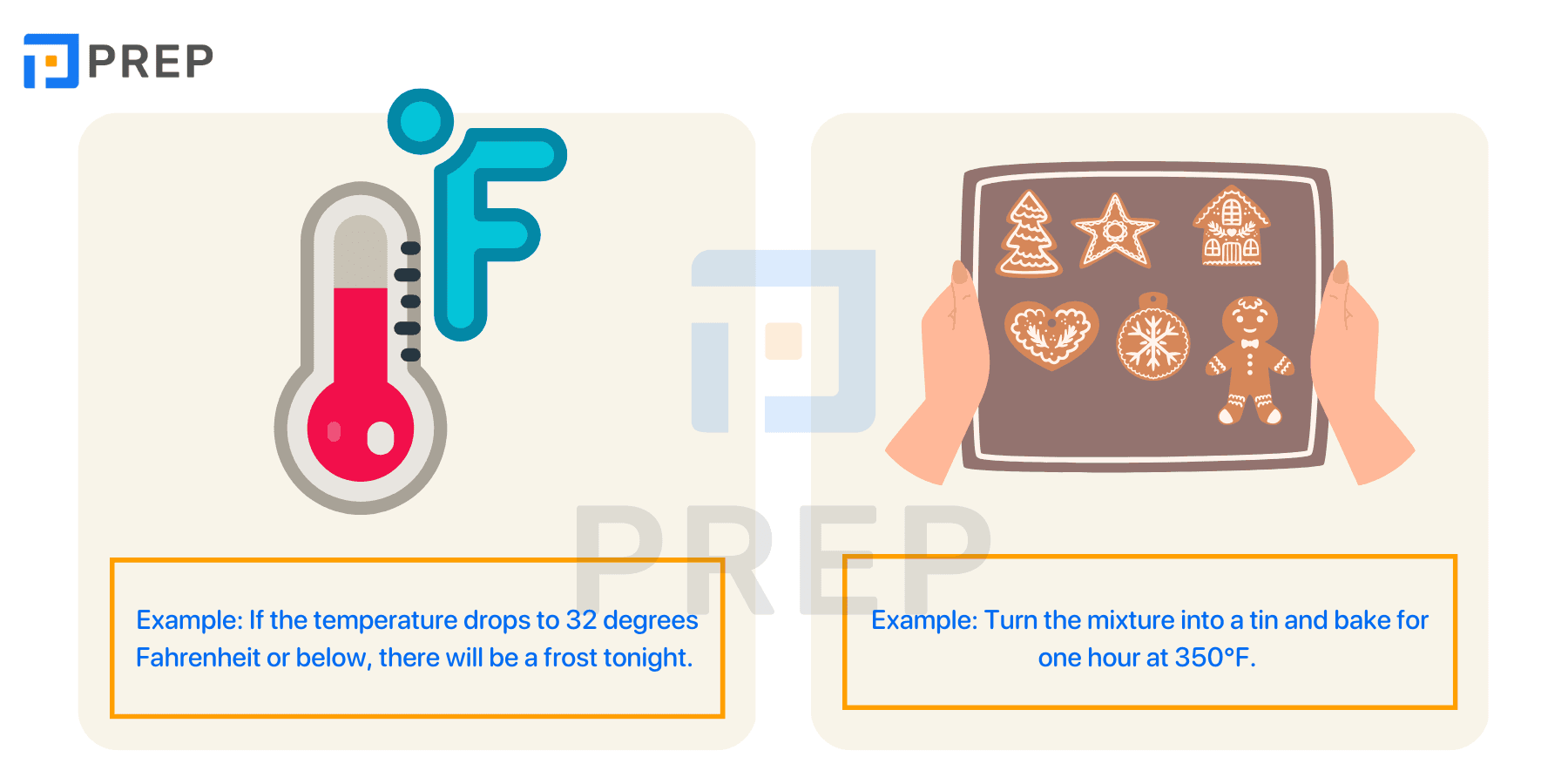
II. Synonyms and Related Words for “Temperature”
The word “temperature” is commonly used in English to describe degrees of heat or cold. However, depending on the context—weather, health, or emotion—you may need other words or expressions that carry similar meanings. Expanding your vocabulary with synonyms and related words can help improve your fluency and lexical variety, especially in writing and speaking tasks.
Synonyms by Context
Weather and Climate - Use when describing outdoor conditions or comparing temperatures between seasons or regions.
|
Word/Phrase |
Meaning |
|
heat |
Refers to high temperature or warmth |
|
chill |
A feeling of cold |
|
climate |
General weather pattern of a region |
|
warmth |
Pleasant heat |
Health and Body Condition - Useful in describing symptoms, medical check-ups, or physical states.
|
Word/Phrase |
Meaning |
|
fever |
Elevated body temperature (medical) |
|
body heat |
General warmth of the body |
|
high/low temperature |
Abnormal body condition |
|
temperature reading |
The measured body temperature |
Emotion and Atmosphere (Figurative Usage) - In abstract or metaphorical uses, “temperature” relates to how calm, intense, or emotionally charged a situation feels.
|
Word/Phrase |
Meaning |
|
mood |
General emotional state |
|
tone |
The emotional quality of a conversation |
|
tension |
Indication of heat in conflict or argument |
|
atmosphere |
The overall feeling or setting of a situation |
Vocabulary Expansion: Related Words
|
Word |
Type |
Meaning / Usage |
|
thermometer |
Noun |
Tool for measuring temperature |
|
thermal |
Adjective |
Related to heat (e.g., thermal energy) |
|
temperate |
Adjective |
Mild climate condition |
|
overheated |
Adjective |
Too hot, literally or figuratively |
|
freezing |
Adjective |
Extremely cold (opposite context) |
These related words help learners express themselves more precisely in contexts ranging from science to natural conversation.
In addition, to express contrast between regions or seasons, learners often use comparatives in English, for example: This year is colder than last year.
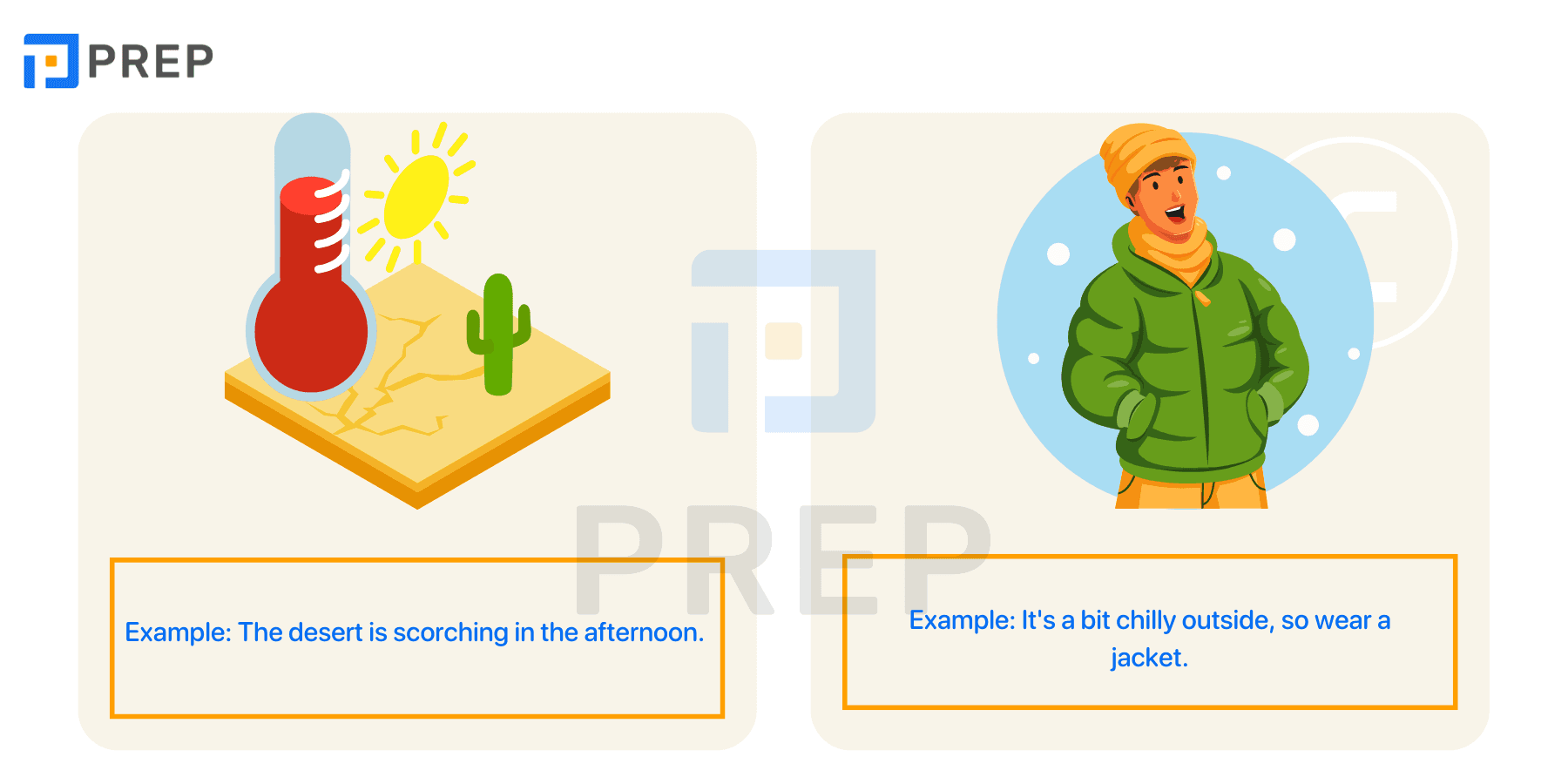
III. Using “Temperature” in English Exams
“Temperature” is a high-frequency word in English exams, especially in topics related to weather, science, and health. To use it effectively, learners should apply it in the appropriate contexts, with the right structure and collocations.
Speaking
- Use in topics like climate, seasons, or daily weather.
- Useful for describing environmental conditions or health:
Example: The temperature is usually quite high in my city during summer. - Highlight changes or comparisons: drop in temperature, extreme temperatures.
Tip: In IELTS Speaking Part 1 and Part 3, use “temperature” to describe your location or environmental issues.
Writing
- Common in IELTS Writing Task 1 when describing charts or line graphs.
- Combine with academic verbs: increase, remain, fluctuate.
- Include units clearly: The average temperature rose to 35°C in July.
Listening
- Frequently heard in weather reports or scientific contexts.
- Pay attention to numbers and units: degrees Celsius or Fahrenheit.
- Recognize expressions: below average, high body temperature, steady temperature.
Reminder: Use accurate collocations and match tone to the task. In academic tasks, avoid informal phrasing and always use “degrees” with specific numbers. This targeted use of “temperature” will help improve both lexical resource and task achievement across exam sections.
IV. Exercises on “Temperature in English” with Answers
Practicing how to use the word “temperature” will help you improve accuracy and fluency in both writing and speaking. Below are three focused exercises with answers to help reinforce vocabulary, structure, and usage.
Exercise 1: Choose the correct word
Select the best word or phrase to complete each sentence.
- My phone shows the (temperature / climate / degree) in real time.
- You should take your (temperature / fever / thermometer) if you feel sick.
- The global (warm / temperature / hot) has increased over the last century.
- Our classroom is kept at room (temperature / weather).
- Yesterday, the temperature (rose / raised / increased) by five degrees.
Exercise 2: Rewrite the sentences
Rewrite these sentences using correct structure and collocations with “temperature.”
- It was 38 temperature yesterday.
- The temperature rise suddenly.
- He have fever today.
- Scientists measure water's cold.
- Her temperature very high is.
Answer
[prep_collapse_expand open_text="View more" close_text="Show less"]
|
Exercise 1 |
Exercise 2 |
|
|
[/prep_collapse_expand]
PREP hopes that through this article, you’ve learned how to use, pronounce, and apply the word “temperature” in English across different contexts. Keep following PREP for more practical tips to boost your English skills every day!

Hi I'm Chloe, and I am currently serving as an Product Content Administrator at Prep Education. With over five years of experience in independent online IELTS study and exam preparation, I am confident in my ability to support learners in achieving their highest possible scores.
Comment
Premium content
View allPersonalized roadmap
Most read












